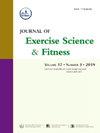体育活动强化课程对学龄前儿童增加体育活动和改善身体健康的影响:一项聚类随机对照试验的研究方案(KID-FIT研究)
IF 2.4
2区 医学
Q2 SPORT SCIENCES
引用次数: 0
摘要
体育活动(PA)对学龄前儿童的健康发展至关重要,具有长期的益处,可以影响以后的生活。世界卫生组织(WHO)建议5-17岁的儿童每天应进行60分钟的中等至高强度的体育锻炼。然而,在全球范围内,儿童缺乏身体活动的情况呈上升趋势,从4岁开始,PA就开始下降。在儿童早期增加PA对于延迟肥胖反弹、促进行为改变、改善身体健康和促进未来的PA参与是重要的。然而,关于以学校为基础的PA干预对学龄前儿童的影响的证据有限。本研究考察了以学龄前儿童为基础的体育锻炼干预在增加体育锻炼、改善学龄前儿童身体健康和健康方面的效果和可持续性,其运动剂量以世卫组织体育锻炼指南为基准。方法本研究采用评估盲法、双组随机对照试验,纳入中国香港110所幼儿园的3300名学龄前儿童(5-6岁)。幼儿园按1:1的比例随机分为干预组和对照组。对照幼儿园将继续他们的常规课程,每周约2.5小时的PA,而干预幼儿园的学龄前儿童将在学前班期间每周额外参加两次75分钟的基于游戏的PA课程(每周额外2.5小时的PA)。这种多成分的干预也将针对家长、教师和幼儿园环境,以进一步鼓励学龄前儿童及其家庭的PA。在学前班开始(0个月)和结束(10个月)时,客观测量PA、心肺健康和其他身体健康成分(肌肉力量和力量、敏捷性、平衡、柔韧性、身体成分)以及心理健康。维持效果将在学龄前儿童过渡到小学(16个月)后评估。将使用广义估计方程或其他适当的统计模型来检查基线值调整后的治疗效果。研究影响本研究将调查以学龄前儿童为基础的PA干预的效果,其PA剂量基准为世卫组织关于促进学龄前儿童PA、身体健康和健康的建议,以及在学龄前儿童过渡到小学教育后的可持续性。研究结果将提高公众对幼儿健康教育重要性的认识,并将为政策制定提供信息,以促进幼儿教育改革,将充分的健康教育纳入学前课程,从长远来看,可以改善儿童的健康。临床试验注册(NCT05521490)本文章由计算机程序翻译,如有差异,请以英文原文为准。
Effects of a physical activity-enhanced curriculum on increasing physical activity and improving physical fitness in preschoolers: Study protocol for a cluster randomized controlled trial (KID-FIT study)
Objective
Physical activity (PA) is critical for healthy development in preschoolers, with long-lasting benefits that can affect later life. The World Health Organization (WHO) recommends that children aged 5–17 years should engage in 60 min of moderate-to-vigorous PA per day. However, physical inactivity in children is on the rise globally, with declines in PA starting at the age of 4 years. Increasing PA during early childhood is important to delay adiposity rebound, promote behavioral changes, improve physical fitness, and facilitate future PA engagement. However, limited evidence has been established on the effects of school-based PA interventions on preschoolers. This study examines the effects and sustainability of a preschool-based PA intervention on increasing PA, improving physical fitness and health in preschoolers, with the exercise dose benchmarked to the WHO PA guidelines.
Methods
This assessor-blinded, two-arm cluster randomized controlled trial will include 3300 preschoolers (aged 5–6 years) from 110 kindergartens in Hong Kong, China. Kindergartens will be randomized into intervention and control groups in a 1:1 ratio. The control kindergartens will continue their usual curriculum of ∼2.5 h PA/week, whereas preschoolers in the intervention kindergartens will engage in an additional 75-min game-based PA class twice per week (extra 2.5 h PA/week) over the preschool year. This multi-component intervention will also target parents, teachers, and the kindergarten environment to further encourage PA in preschoolers and their families. Objectively measured PA, cardiorespiratory fitness and other physical fitness components (muscle strength and power, agility, balance, flexibility, body composition), and psychological health will be examined at the start (0 month) and end (10 months) of the preschool year. Maintenance effects will be assessed after preschoolers’ transition into primary school (16 months). Generalized estimating equations or other appropriate statistical models will be used to examine the treatment effects with adjustment for baseline values.
Study impact
This study will investigate the effects of a preschool-based PA intervention with PA dose benchmarked to the WHO recommendations on promoting PA, physical fitness, and health in preschoolers, and its sustainability after preschoolers' transition into primary education. The findings will raise public awareness on the importance of PA in young children, and will inform policy making to facilitate early childhood educational reforms to incorporate adequate PA into preschool curriculums to improve children's health in the long run.
Trial registration
ClinicalTrials.gov (NCT05521490)
求助全文
通过发布文献求助,成功后即可免费获取论文全文。
去求助
来源期刊
CiteScore
5.10
自引率
3.60%
发文量
54
审稿时长
31 days
期刊介绍:
The Journal of Exercise Science and Fitness is the official peer-reviewed journal of The Society of Chinese Scholars on Exercise Physiology and Fitness (SCSEPF), the Physical Fitness Association of Hong Kong, China (HKPFA), and the Hong Kong Association of Sports Medicine and Sports Science (HKASMSS). It is published twice a year, in June and December, by Elsevier.
The Journal accepts original investigations, comprehensive reviews, case studies and short communications on current topics in exercise science, physical fitness and physical education.

 求助内容:
求助内容: 应助结果提醒方式:
应助结果提醒方式:


